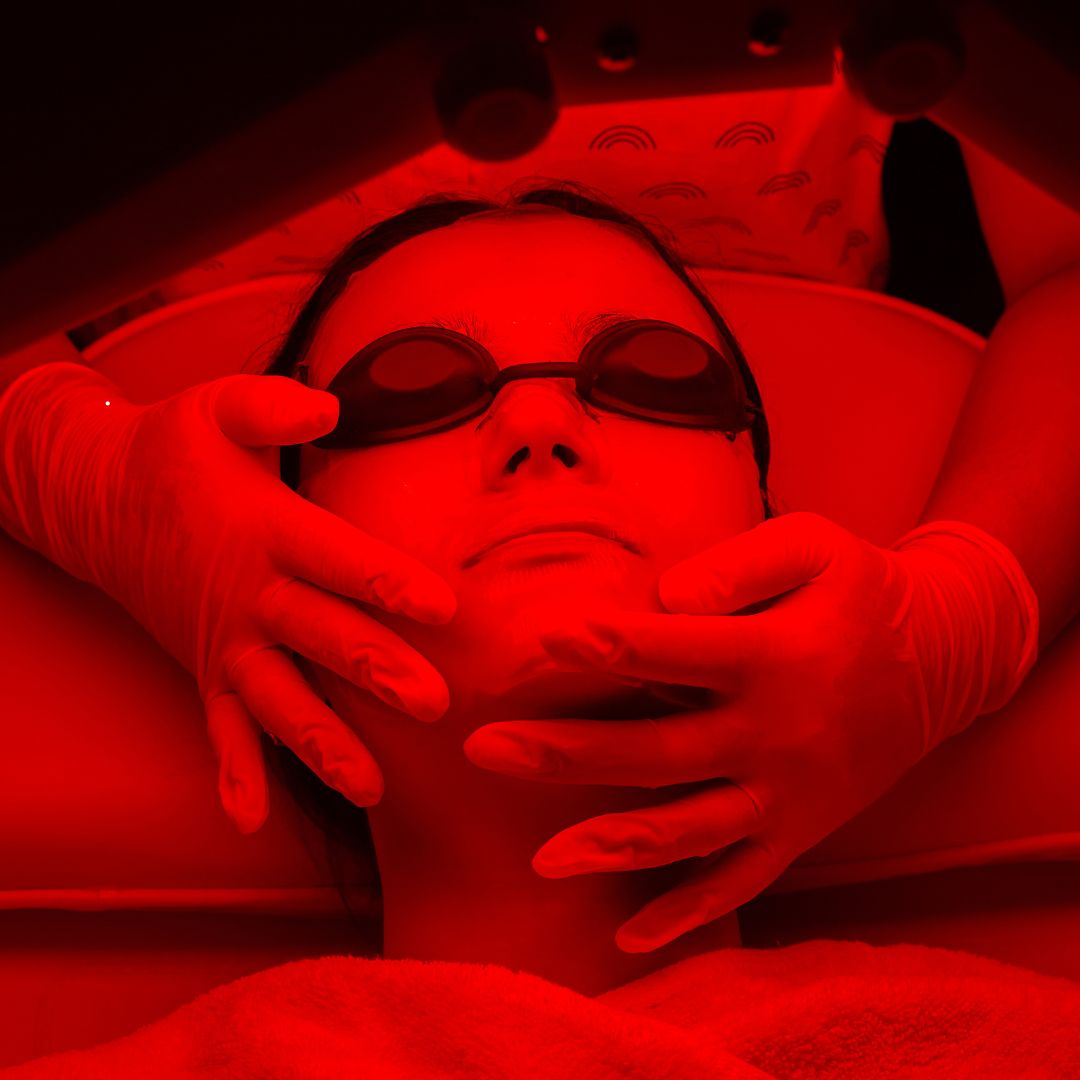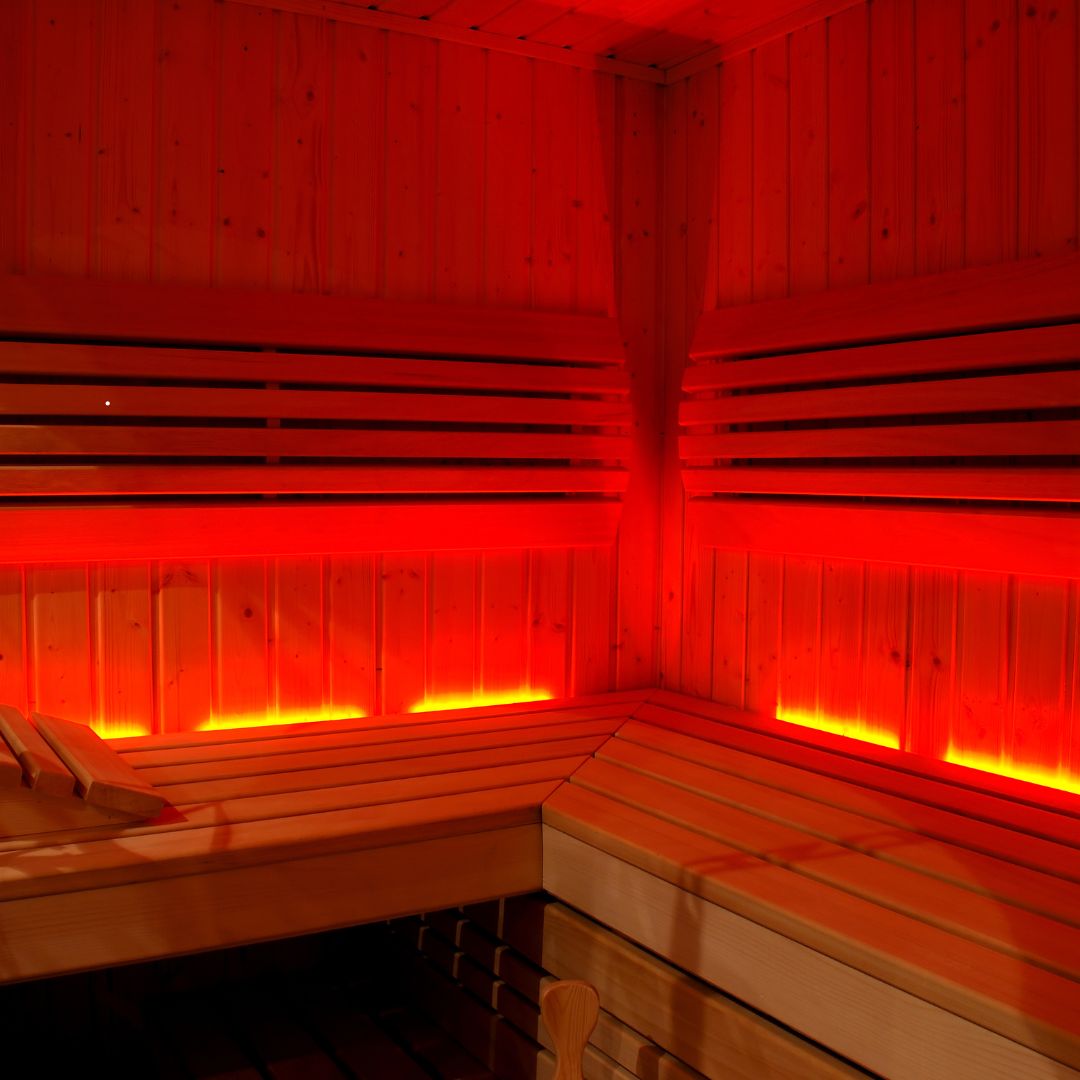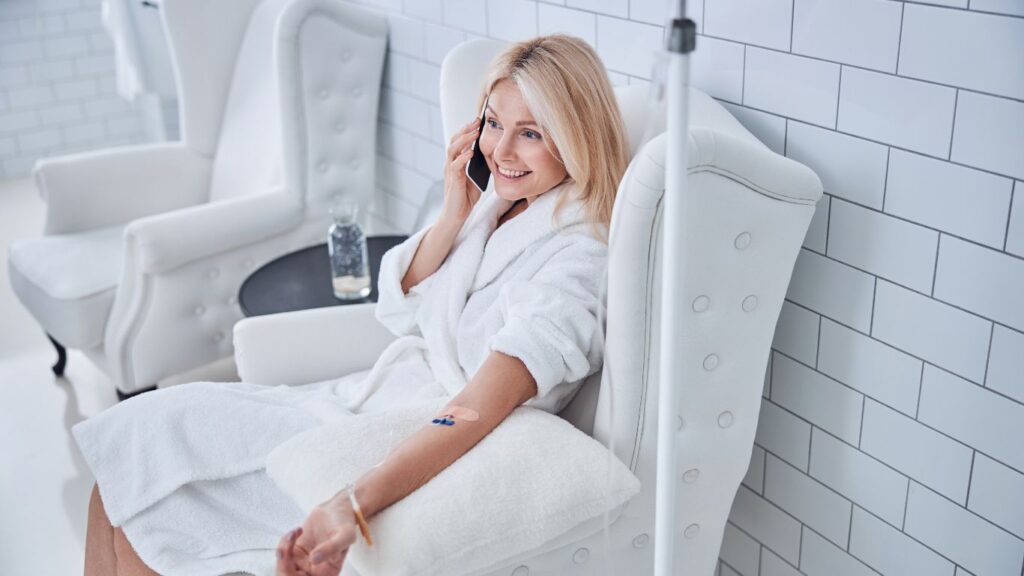Red light therapy (RLT) is an innovative treatment that uses specific wavelengths of light to promote healing and rejuvenation in the body. Many are discovering the many potential scientific benefits of red light therapy, ranging from reducing inflammation to enhancing skin health. However, along with its rise in popularity come several common misconceptions about red light therapy that can cloud public understanding. It’s important to debunk these myths, as believing in them can lead to misguided expectations or even hesitation to explore this promising therapy altogether. By shedding light on the scientific benefits of red light therapy and the truth about red light therapy safety, we aim to clarify the facts and help you make informed decisions about your health and wellness.
How Does Red Light Therapy Work
Red light therapy (RLT) involves the application of specific wavelengths of light from a light-emitting diode or LED light to the skin to penetrate tissues and stimulate cellular function. By just being near infrared light, this form of therapy is non-invasive and has gained traction for its potential to promote healing and alleviate various health issues.
At the core of red light therapy is the principle of photobiomodulation. Essentially, when red light penetrates the skin, it is absorbed by mitochondria – the powerhouse of the cell. This absorption boosts ATP (adenosine triphosphate) production, which is the energy currency of the cell. Increased ATP levels enhance cell repair and growth, leading to improved healing and reduced inflammation. Research indicates that RLT can facilitate quicker wound healing, notably reducing recovery time in some cases compared to standard treatments.
Common Uses of Red Light Therapy in Various Fields
Red light therapy finds applications across a range of fields, including dermatology, sports medicine, and pain management. In skincare, for instance, it’s frequently used to improve skin texture, reduce wrinkles, and even treat conditions like acne. In the world of sports, athletes often turn to red light therapy at the gym for quicker recovery from injuries and to alleviate muscle soreness. Red light therapy’s effectiveness and versatility make it a valuable tool in promoting overall health and wellness.
At Arsenal Health + Fitness, we know how tough it can be for athletes and fitness fans. That’s why we’ve added red light therapy to our recovery programs. Our advanced red light therapy devices help with muscle recovery and reduce soreness after tough workouts. By using RLT, bodybuilders and athletes can speed up recovery and boost their overall performance, giving them an edge in training and competitions.
Ready to give red light therapy a try and experience its benefits?
Book Your Free Consultation Today!
Myth 1: Red Light Therapy is Just a Fad
Red light therapy isn’t a new concept; in fact, its roots can be traced back to the late 19th century when scientists discovered that certain wavelengths of light could have healing properties. Over the years, it has evolved and gained popularity in both medical and aesthetic fields, with researchers continually seeking to understand and harness its potential.
Comparison to Other Established Therapies
When compared to other established therapies like laser surgery or traditional physical rehabilitation, red light therapy offers a non-invasive alternative with fewer side effects. While laser treatments can be effective for precise issues, they often come with risks and longer recovery times. Red light therapy, on the other hand, is gentler on the body while still providing therapeutic benefits, making it an attractive option for many seeking healing without the drawbacks of more invasive methods.
Myth 2: Red Light Therapy is Dangerous
When it comes to the truth about red light therapy safety, overall, red light therapy is considered safe for most individuals. Research indicates that, when used properly, it has minimal risk of harm. Unlike some other forms of light therapy, red light does not significantly heat the skin, which significantly reduces the risk of burns. According to a study published in The Journal of Photomedicine and Laser Surgery, participants reported very few adverse effects, highlighting its non-invasive nature and suitability for a wide range of people.
Potential Side Effects and How to Mitigate Them
While serious side effects from red light therapy are rare, some individuals may experience mild redness or irritation after treatment. To mitigate these effects, it’s important to follow treatment guidelines and not exceed recommended dosages. Always consult with a qualified professional to ensure that you’re using the equipment safely and effectively.
Misconceptions About Light Exposure and Skin Health
One common misconception is that any type of light therapy, including red light therapy, can harm the skin. However, red light therapy focuses on wavelengths that do not emit UV rays, which are responsible for sun damage. Instead, it promotes healing and skin rejuvenation, making it more beneficial than harmful. Understanding these facts can help alleviate fears and allow individuals to embrace the advantages of red light therapy confidently.
Myth 3: You Need Expensive Equipment for Red Light Therapy

There are a variety of red light therapy devices on the market, ranging from handheld units to larger panels and full-body systems. Handheld devices are perfect for targeting specific areas, while larger panels can treat broader regions at once, making them ideal for full-body use. These devices vary in wavelength and power output, which can affect red light therapy effectiveness, so it’s essential to choose one that suits your needs best.
Comparison of Professional vs. At-Home Devices
At-home devices, while generally less intense, can still deliver significant benefits when used consistently. It’s important to do thorough research and consult with a professional before investing in any red light therapy equipment.
On the other hand, professional red light therapy devices are typically more powerful and are used in health facilities. They often provide faster results due to their higher intensity and specific settings tailored to various treatments. For example, at Arsenal Health + Fitness, our state-of-the-art red light therapy facility is designed for maximum effectiveness, as it emits wavelengths and power levels carefully selected to promote healing and recovery.
Ready to give red light therapy a try and experience its benefits?
Book Your Free Consultation Today!
Ultimately, both at-home and professional red light therapy devices have their advantages, so it’s essential to determine what works best for your specific needs and budget.
Budget-Friendly Options for Effective Therapy
If you’re looking for budget-friendly devices, there are plenty of options that can provide effective therapy without breaking the bank. Many reputable brands offer handheld devices and smaller panels at a fraction of the cost of professional equipment. These devices typically incorporate similar wavelengths and can be quite effective for home use, especially red light therapy for skin and muscle. Don’t hesitate to explore different brands, read user reviews, and find a device that fits your budget and therapy goals!
Myth 4: Red Light Therapy is Only for Skin Issues
You might be surprised to learn that red light therapy isn’t just about improving your skin—it offers a range of benefits that go far beyond that! Many people are turning to RLT for its therapeutic advantages in various areas of health.
How RLT Can Aid in Pain Management and Muscle Recovery
One of the standout benefits of red light therapy is its ability to help with pain management and muscle recovery. Whether you’re dealing with sports-related injuries or chronic pain, RLT can promote healing by increasing blood flow and reducing inflammation. Research has shown that participants using RLT for musculoskeletal pain reported significant reductions in pain levels and improved mobility, making it a valuable tool for athletes and those recovering from injuries.
Applications in Mental Health and Well-Being
In addition to physical benefits, red light therapy is also making waves in the field of mental health. Some studies suggest that exposure to specific wavelengths of light can positively influence mood and cognitive functions. People have reported feeling more relaxed and focused after RLT sessions, which can be particularly beneficial for those coping with stress or anxiety. By integrating this therapy into your wellness routine, you might find not only relief from physical discomfort but also an overall enhancement in your mental well-being!
Myth 5: Results from Red Light Therapy are Instant
It’s common to hope for immediate results, but like many therapies, RLT requires patience. While some individuals may notice improvements in skin texture or pain relief after just a few sessions, more significant changes often take time and consistent use. Typically, users can expect to see noticeable results within four to six weeks of regular therapy sessions.
Consistency is vital to achieving the full range of benefits from red light therapy. Just like exercise, the more regularly you engage in RLT, the better the results you’ll likely experience. Setting a routine can help keep you committed and on track, allowing you to maximize the positive effects over time.
How to Choose the Right Red Light Therapy Device
Choosing the right red light therapy device is crucial to getting the most out of your treatments. With so many options available, it’s essential to keep a few key factors in mind to ensure you select the device that best meets your needs.
Factors to Consider When Selecting a Device
When shopping for a red light therapy device, consider its wavelength and power output. Different wavelengths can target various skin concerns and conditions, so it might be beneficial to choose a device that falls within the therapeutic range of 600 to 900 nanometers. Additionally, think about the size of the device. Handheld units are great for focusing on specific areas, while larger panels can cover more surface area, making them ideal for full-body treatments.
Popular Brands and Their Features
There are several reputable brands on the market, each offering unique features. For instance, devices from brands like Joovv are known for their modular designs, allowing you to combine multiple units for larger coverage, while companies like Mito Red Light focus on providing devices with high power output and energy-efficient designs. Reading user reviews can help you find a brand and model that suits your specific therapy goals.
Despite this, using a professional red light therapy facility, such as Arsenal Health + Fitness, can offer numerous benefits, including access to state-of-the-art red light therapy and personalized treatment plans. Our team can assist you in determining the best course of therapy for your needs, ensuring you get the most out of each session.
Don’t hesitate to reach out and schedule a consultation to learn more about how red light therapy can benefit you!
Book Your Free Consultation Today!
Importance of FDA Approval and Certifications
Always check if the device you’re considering has FDA approval or other certifications. An FDA-approved device means it has undergone rigorous testing for safety and efficacy, providing you with peace of mind. Prioritizing certified devices can ensure that you are investing in an effective and reliable product for your red light therapy journey.
Common Misconceptions About Red Light Therapy Now Debunked!
Red light therapy is a versatile and promising treatment that extends well beyond helping with skin issues. With the potential benefits for pain management, muscle recovery, and even mental well-being, it’s worth considering as part of your wellness routine. Remember to be patient with the process and choose the right device to suit your needs.
If you’re interested in experiencing the benefits firsthand, working with us at Arsenal Health + Fitness can provide you with expert guidance and access to cutting-edge technology.
Let us help you take your health journey to the next level!
Book Your Free Consultation Today!
At Arsenal Health and Fitness, we offer a comprehensive range of end-to-end health and wellness services designed to cater to every aspect of your well-being. From a variety of group classes training to rejuvenating recovery and cutting-edge health solutions, we’re your all-in-one destination for achieving and maintaining peak physical and mental health.



